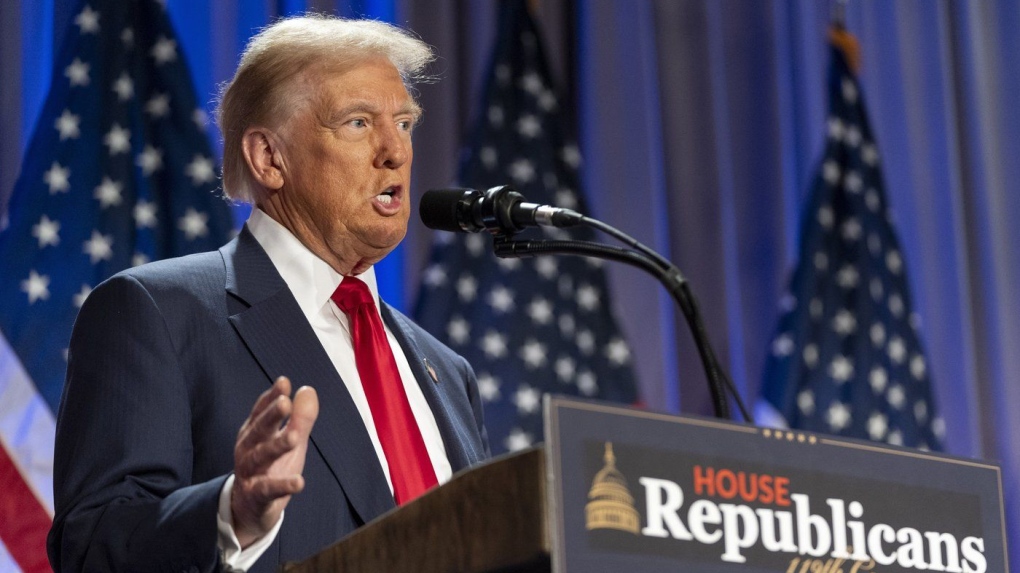Canadians, especially in Ontario, awoke to a jarring new reality Tuesday as U.S. President Donald Trump’s unyielding tariff deadline passed overnight, unleashing a continental trade war with no signs of retreat.
The U.S. tariffs—25% on all Canadian and Mexican imports, with a lighter 10% hit on Canadian energy—kicked in at 12:01 a.m. ET, following Trump’s Monday declaration at the White House: “Tariffs, 25% on Canada, 25% on Mexico—it’s starting. They’ll need to deal with it.”
Prime Minister Justin Trudeau swiftly denounced the measures as “unwarranted” in a late Monday statement, vowing retaliation with a two-phase tariff plan: $30 billion in immediate levies on U.S. goods, followed by $125 billion more in 21 days. “These measures will stay until the U.S. reverses course,” Trudeau said. “We’re coordinating with provinces on additional non-tariff actions while pressing the U.S. to rethink this, but Canada won’t back down from defending our economy and workers.”
Trudeau will address the nation Tuesday morning from Ottawa alongside Finance Minister Dominic LeBlanc, Foreign Affairs Minister Mélanie Joly, and Public Safety Minister David McGuinty.
Wall Street reeled Monday as the S&P 500 shed 2%, the Dow sank 1.5%, and the Nasdaq nosedived 2.6%. Ontario Premier Doug Ford didn’t mince words, warning of dire consequences and hinting at cutting off vital energy and mineral exports to the U.S. “The market’s about to crash harder than a bobsled,” Ford told NBC News. “This is a disaster in the making—Trump needs to stop for everyone’s sake.”
Ford stressed Canada’s hands were tied: “When someone attacks us without cause, we hit back.”
For a month, Canadian leaders, including premiers, lobbied Washington after Trump’s initial executive order linked the tariffs to border security concerns over drugs and migration. Despite some U.S. support for Canada’s border plan, Trump remained unmoved. U.S. Customs data underscores the disparity: just 13.6 grams of fentanyl were seized at the northern border in January, a fraction of southern totals.
Trump briefly delayed the tariffs—originally set earlier—to push for an “economic” fix, suggesting Monday that Canada and Mexico “build their factories here—no tariffs then.” But Dan Kelly of the Canadian Federation of Independent Business called the tactic a “sword held over us,” eroding business confidence.
Cross-border labor and industry voices, including the International Association of Machinists and Aerospace Workers, slammed the tariffs, urging Trump to bolster, not fracture, North American ties. Many see the move as leverage ahead of the looming Canada-U.S.-Mexico Agreement review, a Trump-era replacement for NAFTA.
Mike Holden of the Business Council of Alberta noted Trump’s indifference to public opinion but suggested U.S. economic pain—stock dives, inflation spikes, or job losses—might shift his stance. Across the border, China’s tariffs doubled to 20% overnight, prompting Beijing to slap 15% duties on U.S. farm goods like pork and soy.
A Peterson Institute report last month pegged the annual cost of Trump’s tariffs at over US$1,200 per U.S. household. U.S. critics emerged fast—Democrats blasted the policy, while even GOP Senator Susan Collins of Maine voiced alarm over her state’s tight economic knot with Canada, from lobsters to blueberries.
Trump’s trade upheaval, launched upon his January return to power, also includes 25% steel and aluminum tariffs effective March 12—stacking onto Canada’s burden—plus looming duties on cars, copper, lumber, and agriculture signaled Monday.
Ontario, a linchpin in Canada-U.S. trade, now braces for the fallout.

